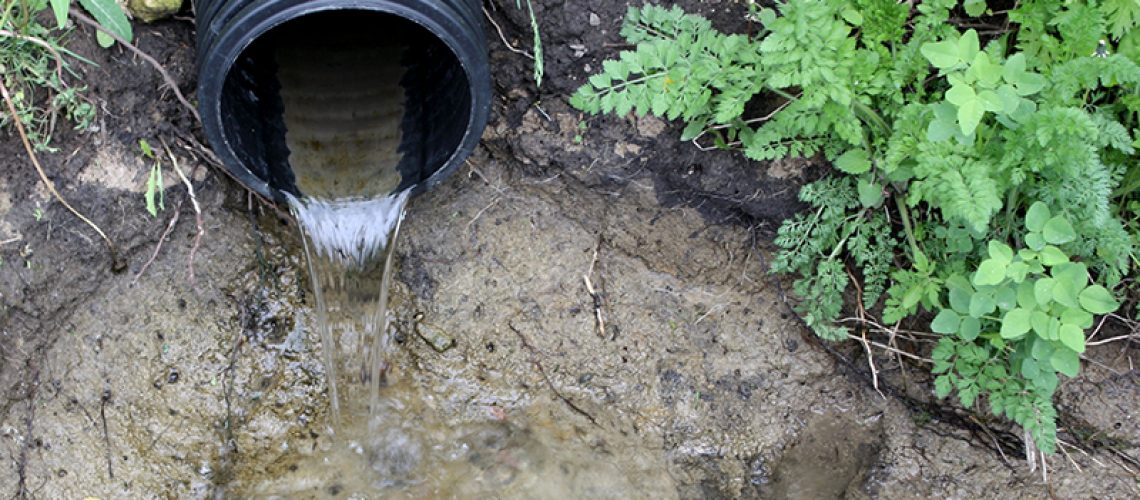
Drainage issues in the landscape can be challenging to fix. During heavy rains, the ground becomes saturated and the water can not be absorbed into the ground and starts pooling. This can cause root rot on your shrubs, fungus in your turf, and seeping water into your home’s foundation. What are some of the ways to handle this?
First on the list of fixes is to re grade the area to drain the water off to where you want it. This is simply making the water travel down and slight grade to a lower spot where you want the water to end up. Only a small amount of slope is needed to move the water then allow gravity to work.
Another option is the french drain. To do this, you dig a trench about a foot deep where you have your water pooling. Next, put some septic cloth in the bottom of the trench, followed by an inch or two or small rock. The next part is to put a piece of 4? perforated, corrugated pipe in the trench, and cover it up with another couple inches of rock followed by the septic cloth on top. Finally, cover the trench with your top covering, either mulch, rock, more dirt and sod etc. This will allow the water to percolate through the soil into the rock and pipe allowing the ground above to dry out. The optimum way to go then is to run the pipe end out to a natural area of perhaps a retention pond.
The next option is a dry well. This is basically a large hole in the ground where your wet area is. You dig a hole and size it to the volume of water you will need to drain off. We use typically two types. The first is a small box style drain with a grate on top, usually in the 12 to 16 inch square size. The other is an approx. 35 gallon drum sized container which we put holes in. This is then done similar to a french drain in that you line the hole with septic cloth, put some rock in the bottom. Then put in the drum filling around it with rock followed by the lid and more rock and septic cloth. Finally you cover with your ground cover.
Both of the ones above can be used together also to direct water from and area to the drum to allow it to collect or drain off in another area.
Getting water away from your home’s foundation is important. If you have gutters, instead of just hooking on pipes to the end and laying them in the shrubs, you can use the same corrugated pipe without the holes, that you used in the french drain to run the extra rain water to a retention pond or dry-well or even better, hook up a rain barrel to the end of it and collect it for reuse.
Lastly, if you find you do have an area that seems to always be wet, check to make sure you dont have an irrigation or water line leak. Sometimes a little leak can make an area seem soggy or spongy all the time but never really get wet with a puddle. The easiest way to check is to turn off all the water in your home and look at your meter to make sure its not moving. Most have a small wheel or dial that move rapidly even when a small amount of water is being used.

